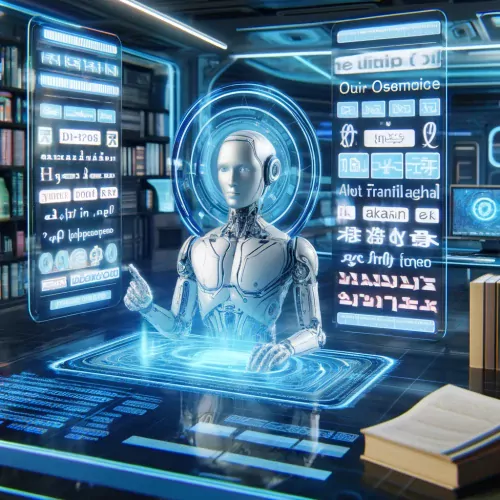
In the modern era, the integration of artificial intelligence (AI) into various sectors has been transformative, and the field of translation is no exception. AI for translation has evolved from rudimentary systems to highly sophisticated technologies capable of interpreting and translating multiple languages with remarkable accuracy. This article explores the various facets of artificial intelligence translation, highlighting the advancements, applications, and future potential of AI in this domain.
The Evolution of AI Translation
Artificial intelligence translation has come a long way since its inception. Early attempts at machine translation were often criticized for their lack of accuracy and context awareness. However, with the advent of deep learning and neural networks, AI has made significant strides in understanding and processing human languages. These advancements have revolutionized how we approach translation, offering nuanced and contextually accurate translations that were previously unattainable.
Applications of AI in Translation
The applications of AI in translation are vast and varied. One of the most significant advancements is in the area of AI interpreting. AI interpreters can facilitate real-time communication between speakers of different languages, making international business meetings, conferences, and diplomatic interactions smoother and more efficient. AI interpreting systems can process spoken language, translate it, and deliver it in another language almost instantaneously.
Another notable application is AI video translation. With the rise of global digital content consumption, the demand for multilingual video content has surged. AI video translation tools can automatically generate subtitles or dubbed audio tracks in multiple languages, making content accessible to a broader audience. This technology is particularly beneficial for educational videos, entertainment, and online tutorials, where understanding the content accurately is crucial.
AI language translation is also making waves in the field of document translation. AI document translation systems can translate large volumes of text quickly and accurately, which is invaluable for industries such as legal, medical, and technical fields where precise and reliable translations are essential. These systems can handle various document formats, ensuring that the translated content retains the original layout and structure.
Benefits of AI in Translation
The benefits of AI and translation are numerous. One of the primary advantages is the speed and efficiency with which AI can process and translate languages. Traditional human translation can be time-consuming and costly, especially for large-scale projects. AI, on the other hand, can handle vast amounts of text in a fraction of the time, significantly reducing turnaround times and costs.
Moreover, artificial intelligence in translation enhances accuracy and consistency. Human translators, despite their expertise, are susceptible to errors and inconsistencies. AI systems, trained on extensive datasets, can maintain a high level of accuracy and uniformity across translations, ensuring that the translated content is reliable and free from human biases.
Future Prospects of AI in Translation
The future of AI for translation looks promising, with continuous advancements in AI technologies. Researchers are constantly working on improving the capabilities of AI translation systems, making them more context-aware and culturally sensitive. Innovations such as sentiment analysis and emotion detection are being integrated into AI models, allowing for translations that not only convey the correct meaning but also the appropriate tone and emotion.
Additionally, the integration of AI interpreters into everyday devices and applications is expected to become more widespread. Imagine a world where your smartphone or smart speaker can instantly translate conversations, breaking down language barriers in real-time. This would revolutionize how we communicate and interact with people from different linguistic backgrounds.
Challenges and Considerations
Despite the remarkable progress, there are still challenges to overcome in the realm of AI language translation. One of the primary concerns is the handling of low-resource languages. While AI systems excel at translating widely spoken languages, they often struggle with languages that have limited available data for training. Addressing this issue requires concerted efforts to collect and curate data for these languages, ensuring that AI translation benefits all linguistic communities.
Privacy and security are also critical considerations. AI document translation involves processing sensitive information, and it is crucial to ensure that this data is handled securely and confidentially. Developers and users of AI translation technologies must prioritize data protection and adhere to stringent privacy standards.
In conclusion, AI for translation is revolutionizing the way we approach multilingual communication. From AI video translation to AI document translation, the applications of AI in this field are vast and transformative. As technology continues to advance, the future of artificial intelligence translation holds immense potential, promising to break down language barriers and foster global understanding. However, it is essential to address the challenges and ethical considerations associated with AI to ensure that its benefits are accessible to all.








